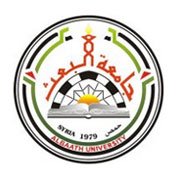اشترك بالحزمة الذهبية واحصل على وصول غير محدود شمرا أكاديميا
تسجيل مستخدم جديدQuasiparticle entropy in superconductor/normal metal/superconductor proximity junctions in the diffusive limit
178
0
0.0
(
0
)
اسأل ChatGPT حول البحث

ﻻ يوجد ملخص باللغة العربية
We discuss the quasiparticle entropy and heat capacity of a dirty superconductor-normal metal-superconductor junction. In the case of short junctions, the inverse proximity effect extending in the superconducting banks plays a crucial role in determining the thermodynamic quantities. In this case, commonly used approximations can violate thermodynamic relations between supercurrent and quasiparticle entropy. We provide analytical and numerical results as a function of different geometrical parameters. Quantitative estimates for the heat capacity can be relevant for the design of caloritronic devices or radiation sensor applications.
قيم البحث
اقرأ أيضاً
In s-wave superconductors the Cooper pair wave function is isotropic in momentum space. This property may also be expected for Cooper pairs entering a normal metal from a superconductor due to the proximity effect. We show, however, that such a deduc
tion is incorrect and the pairing function in a normal metal is surprisingly anisotropic because of quasiparticle interference. We calculate angle resolved quasiparticle density of states in NS bilayers which reflects such anisotropic shape of the pairing function. We also propose a magneto-tunneling spectroscopy experiment which could confirm our predictions.
We investigate heat and charge transport through a diffusive SIF1F2N tunnel junction, where N (S) is a normal (superconducting) electrode, I is an insulator layer and F1,2 are two ferromagnets with arbitrary direction of magnetization. The flow of an
electric current in such structures at subgap bias is accompanied by a heat transfer from the normal metal into the superconductor, which enables refrigeration of electrons in the normal metal. We demonstrate that the refrigeration efficiency depends on the strength of the ferromagnetic exchange field h and the angle {alpha} between the magnetizations of the two F layers. As expected, for values of h much larger than the superconducting order parameter Delta, the proximity effect is suppressed and the efficiency of refrigeration increases with respect to a NIS junction. However, for h sim Delta the cooling power (i.e. the heat flow out of the normal metal reservoir) has a non-monotonic behavior as a function of h showing a minimum at h approx Delta. We also determine the dependence of the cooling power on the lengths of the ferromagnetic layers, the bias voltage, the temperature, the transmission of the tunneling barrier and the magnetization misalignment angle {alpha}.
We study low temperature electron transport in p-wave superconductor-insulator-normal metal junctions. In diffusive metals the p-wave component of the order parameter decays exponentially at distances larger than the mean free path $l$. At the superc
onductor-normal metal boundary, due to spin-orbit interaction, there is a triplet to singlet conversion of the superconducting order parameter. The singlet component survives at distances much larger than $l$ from the boundary. It is this component that controls the low temperature resistance of the junctions. As a result, the resistance of the system strongly depends on the angle between the insulating boundary and the ${bf d}$-vector characterizing the spin structure of the triplet superconducting order parameter. We also analyze the spatial dependence of the electric potential in the presence of the current, and show that the electric field is suppressed in the insulating boundary as well as in the normal metal at distances of order of the coherence length away from the boundary. This is very different from the case of the normal metal-insulator-normal metal junctions, where the voltage drop takes place predominantly at the insulator.
We investigate heat and charge transport in NNIS tunnel junctions in the diffusive limit. Here N and S are massive normal and superconducting electrodes (reservoirs), N is a normal metal strip, and I is an insulator. The flow of electric current in s
uch structures at subgap bias is accompanied by heat transfer from the normal metal into the superconductor, which enables refrigeration of electrons in the normal metal. We show that the two-particle current due to Andreev reflection generates Joule heating, which is deposited in the N electrode and dominates over the single-particle cooling at low enough temperatures. This results in the existence of a limiting temperature for refrigeration. We consider different geometries of the contact: one-dimensional and planar, which is commonly used in the experiments. We also discuss the applicability of our results to a double-barrier SINIS microcooler.
We demonstrate both theoretically and experimentally two limiting factors in cooling electrons using biased tunnel junctions to extract heat from a normal metal into a superconductor. Firstly, when the injection rate of electrons exceeds the internal
relaxation rate in the metal to be cooled, the electrons do no more obey the Fermi-Dirac distribution, and the concept of temperature cannot be applied as such. Secondly, at low bath temperatures, states within the gap induce anomalous heating and yield a theoretical limit of the achievable minimum temperature.
سجل دخول لتتمكن من نشر تعليقات
التعليقات
جاري جلب التعليقات


سجل دخول لتتمكن من متابعة معايير البحث التي قمت باختيارها


